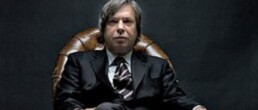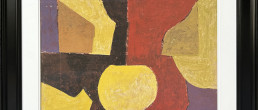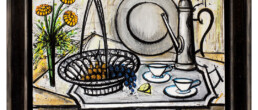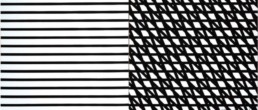Léonard Foujita
1886 (Japan) - 1968 (Swiss)
No work available for the moment.
Biography
Born in a japaneese family, his father was doctor in the Imperial Army, but open to Occidental culture.
He is also ceramist, photograph, illustrator and stylist.
At primary school he began to learn french. Tsuguharu studies occidental painting at the Beaux-Arts in Tokyo until 1910. In 1913 he arrives in Paris and settle in Montpanasse. He had promise his family and his wife Tomiko to come back to Japan soon.
The day after he arrived, the chilian painter Manuel Ortiz de Zarate presents him several artists : he met all the most important protagonists of the movement called “L’École de Paris“, such as Amedeo Modigliani, Jules Pascin, Chana Orloff, André Derain, Moïse Kisling, Chaim Soutine, or Fernand Léger and became friends with Juan Gris, Pablo Picasso and Henri Matisse. Foujita claimed in his memoir that he met Picasso less than a week after his arrival, but a recent biographer, relying on letters Foujita sent to his first wife in Japan, clearly shows that it was several months until he met Picasso. He also took dance lessons from the legendary Isadora Duncan.
One year after his divorce with Tomiko in 1916, in March 1917 in the Café de la Rotonde, Foujita met a young lady by the name of Fernande Barrey. At first, she totally ignored Foujita‘s efforts to engage her in conversation. However, early the next morning, Foujita showed up at Fernande’s place with a blue corsage he had made overnight. Intrigued, she offered him a pot of tea and they were married 13 days later. In 1925, they will divorce, and Lucie Badoul called “Youki” or “Rose Snow” later became Foujita’s third wife.
In 1918, a trip to the south of France was organized by the Polish poet Léopold Zborowski, who had the idea that his artist-friends could sell pictures there to rich tourists. Foujita and his wife went along as did Soutine, Modigliani with his lover, Jeanne Hébuterne. The trip was not, however, a success and the group had to survive on the advances that Foujita had obtained from his Paris dealer.
Foujita had his first studio at no. 5 rue Delambre in Montparnasse where he became the envy of everyone when he eventually made enough money to install a bathtub with hot running water. Many models came over to Foujita‘s place to enjoy this luxury, among them Man Ray‘s very liberated lover, Kiki de Montparnasse, who boldly posed for Foujita in the nude in the outdoor courtyard. Another portrait of Kiki titled “Reclining Nude with Toile de Jouy,” shows her lying naked against an ivory-white background. It was the sensation of Paris at the Salon d’Automne in 1922. Foujita became a real star in Paris and had a lot of success during this period.
After the breakup of his third marriage, and his flight to Brazil in 1931 (with his new love, Mady), Foujita traveled and painted all over Latin America, giving hugely successful exhibitions along the way. In Buenos Aires, Argentina, 60,000 people attended his exhibition, and more than 10,000 queued up for his autograph. In 1932 he contributed a work to the Pax Mundi, a large folio book produced by the League of Nations calling for a prolonged world peace. However, by 1933 he was welcomed back as a minor celebrity to Japan where he stayed and became a noted producer of militaristic propaganda during the war. For example, in 1938 the Imperial Navy Information Office supported his visit to China as an official war artist.
Foujita returned to France after the war. In 1955 he became a French citizen, thereafter renouncing his Japanese citizenship.
On his return to France, Foujita converted to Catholicism. He was baptised in Reims Cathedral on 14 October 1959, with René Lalou (the head of the Mumm champagne house) as his godfather and Françoise Taittinger as his godmother. This is reflected in his last major work, at the age of 80, the design, building and decoration of the Foujita Chapel in the gardens of the Mumm champagne house in Reims, France, which he completed in 1966, not long before his death.
Tsuguharu/ Léonard Foujita died of cancer on January 29, 1968, in Zürich, Switzerland and was burried in the Cimetière de Villiers-le-Bâcle, Essonne département, France. In 2003, his coffin was reinterred at the Foujita Chapel under the flagstones in the position he originally intended when constructing the chapel.






